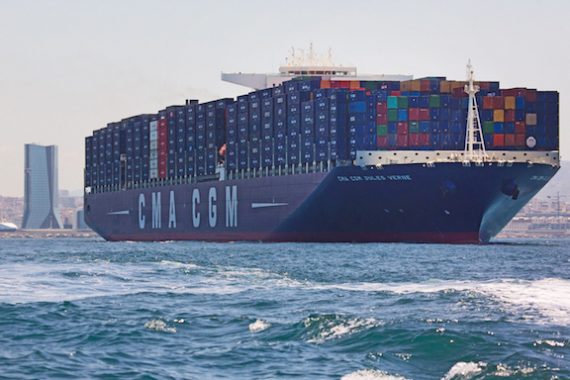Coronavirus supply chain headaches spread as more than one in two Asia – North Europe sailings are cancelled
More than one in two carrier departures from Asia to North Europe are being cancelled in the wake of the coronavirus that has hammered China, the world’s manufacturing centre, very hard since the start of the year.
Analysts at Alphaliner have counted 33 cancelled sailings on the tradelane with the largest boxships in the world in the last four weeks, meaning 46% of scheduled departures on the route have been dropped.
Moreover, carrier schedules and customer announcements seen by Alphaliner indicate that another 17 sailings are to be blanked in the next four weeks. Capacity reductions over the eight-week period from Chinese New Year are expected to reach about 700,000 teu, far more severe than the 340,000 teu cuts seen in the same post-Chinese New Year period last year.
Capacity reductions on other routes have been similarly debilitating for global supply chains with Alphaliner estimating the Asia – Med route will reach about 290,000 teu, while 680,000 teu will be removed from the transpacific.
“While work in China has finally resumed after the extended three week holidays, the container demand recovery has been slow. Vessel capacity utilisation therefore remains low, despite the many cancelled sailings,” Alphaliner noted in its most recent weekly report.
In a report from early February Alphaliner warned that the coronavirus will reduce container cargo volumes at Chinese ports – including Hong Kong – by more than 6m teu in the first quarter of 2020.
Data from Copenhagen-based Sea-Intelligence earlier this month suggested the coronavirus has been costing liners up to $350m in lost revenues every week.
Lars Jensen, a leading container shipping analyst and regular Splash contributor, warned on a LinkedIn posting yesterday that the blank sailings were creating further headaches for liner executives.
“There will be clear ripple effects from the raft of additional blank sailings as this will inevitably curb the backhaul capacity down the line – not to mention the impact from disruption in the carriers’ ability to effectively manage their empty repositioning,” Jensen wrote.
This ripple effect is becoming evident with Hapag Lloyd announcing a $325 surcharge per container from North Europe to Asia and other surcharges kicking in from the Mediterranean back to Asia too.
Jensen suggested now was the time to also consider “round 2” of the ripple effects.
“Assuming the virus outbreak gets under control, Chinese factories resume full production in March-April, and may even run at higher output initially to make up for lost production. This will happen at the same time as the amount of vessels returning to Asia with empty boxes is at a very low level due to the current blank sailings potentially triggering equipment shortages (and associated rate hikes) for Asian exports,” Jensen warned.


Comments
Post a Comment